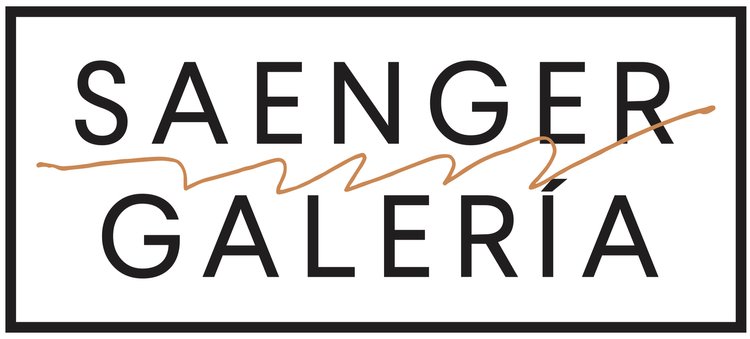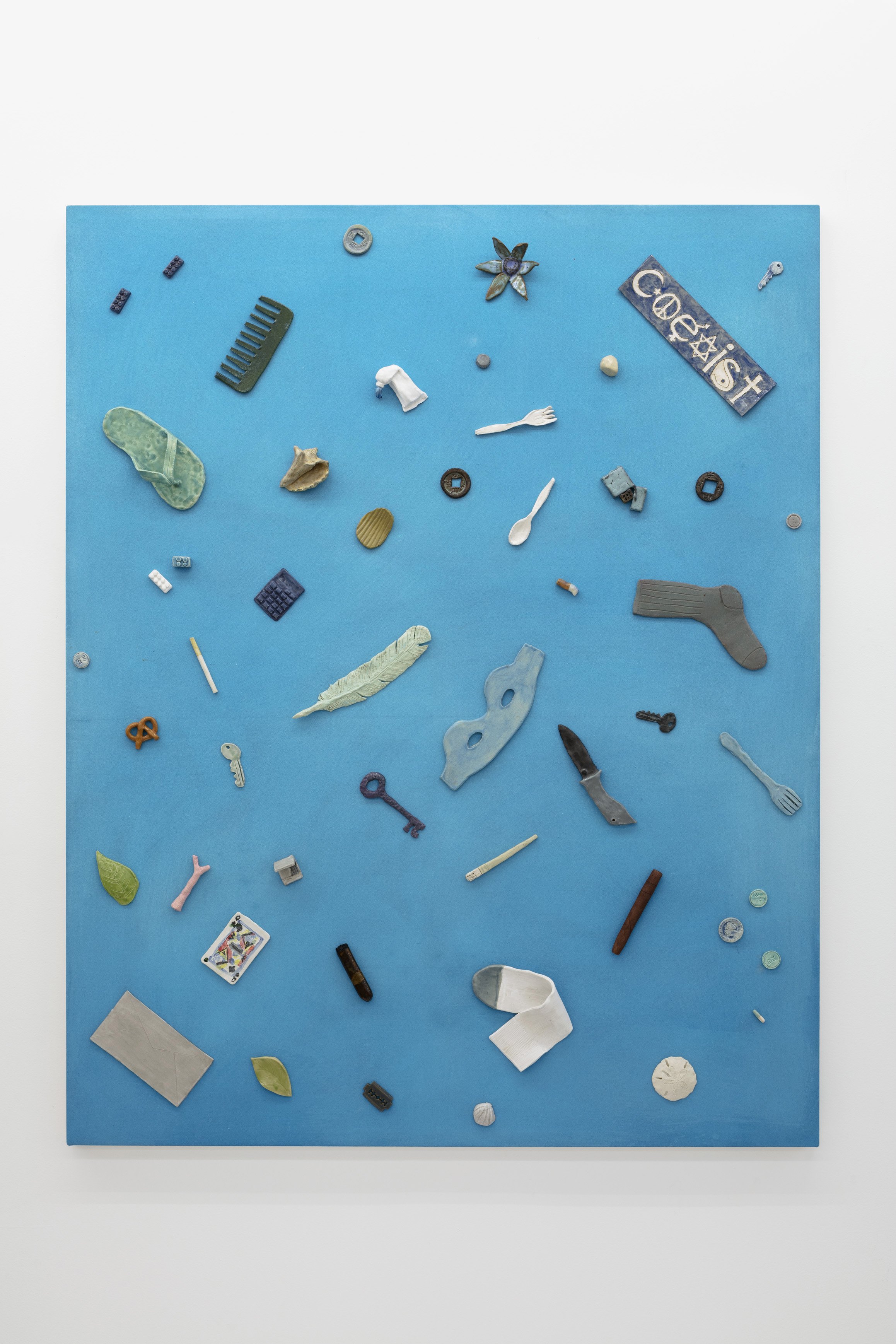THIS, THAT & THE OTHER
SCOTT REEDER
Installation View @ SAENGER GALERÍA, 2023. PH. Ramiro Chaves.
D/L PRESS
Las cosas se han vuelto más divertidas desde Duchamp. Muchas personas han aceptado la idea de que el arte puede ser absolutamente cualquier cosa, pero aún pueden pensar que no debería ser divertido".
En esta cita, extraída de una entrevista publicada en la revista Art in America hace diez años, el artista nacido en Michigan Scott Reeder (nacido en 1970), expresa algunos de los intereses fundamentales de su práctica: la historia del arte, el uso público del arte y la crítica de arte vistos a través de un humor paródico y mordaz. Desde ese peculiar horizonte, Reeder presenta su primera exposición individual en México en colaboración con Saenger Galería: Ésto, eso y aquello.
Constituida por tres de sus más recientes series —Object Paintings, Image Paintings y la serie Kuddelmuddel Ceramic—la exposición de Reeder reúne una vasta colección de pinturas planas y en relieve, así como esculturas en cerámica vidriada, que permiten al público adentrarse en la trayectoria de más de veinticinco años del llamado Midwestern Magritte. Dicha analogía con el artista belga, el pintor entre los filósofos, se debe a una común observación de lo cotidiano y al cuestionamiento de la normalidad. La similitud entre las intenciones de ambos artistas es más profunda si se considera la confrontación como estrategia compositiva; ya sea una fricción material, como sucede en las pinturas cerámicas o pinturas cerámicas en relieve, donde una superficie superplana y lisa, en tonos pastel y aspecto diluido, contrasta con la masa de pequeñas figuras sólidas y brillantes de cerámica vidriada, o bien al choque por repetición en las cuales una misma pareja de protagonistas, el pan y la mantequilla, aparece en diversos contextos o en una misma situación con sutiles variantes.
Junto a las pinturas de pan y mantequilla, que en su repetición y variación de un mismo tema nos recuerdan los estudios clásicos de El pintor y la modelo de Picasso o el paisaje de carácter a la vez intimista y épico de Turner o cualquier otro género y artista de la tradición pictórica convertida en cliché, las esculturas e instalaciones de objetos cotidianos realizados en cerámica son las obras incluidas en la exposición Esto, Eso y aquello en la que Reeder ha profundizado en la multiplicidad de posibilidades del humor, de apariencia inofensiva, pero con un carácter altamente corrosivo. Reeder ha declarado: "Ya sea divertido o no, definitivamente estoy interesado en una especie de reducción extrema, subestimación o inexpresividad, al hacer algo realmente conciso". Y son precisamente sus pequeñas, diversas, comunes y numerosas esculturas de cerámica, reducciones muy puntuales de una realidad concreta, cotidiana y discreta —una colección de objetos banales pertenecientes a un mundo de múltiples sin originales— ante las que, sin embargo, todavía es posible sorprenderse.
Si bien el artista ha confesado que su trabajo "casi siempre comienza con el lenguaje", igualmente vale la pena señalar que el asombro que suscita su obra, en términos de ingenio, extrañeza, pánico y admiración, no requiere explicación alguna. Su práctica habita en la paradoja y evidencia el sinsentido de la realidad, y como ésta, existe simplemente, como existen las demás cosas, en su rebelión y en su contradicción. Reeder nombra ese mundo anónimo, abstracto y cotidiano; es un fiel y afilado lector.
— Christian Barragán
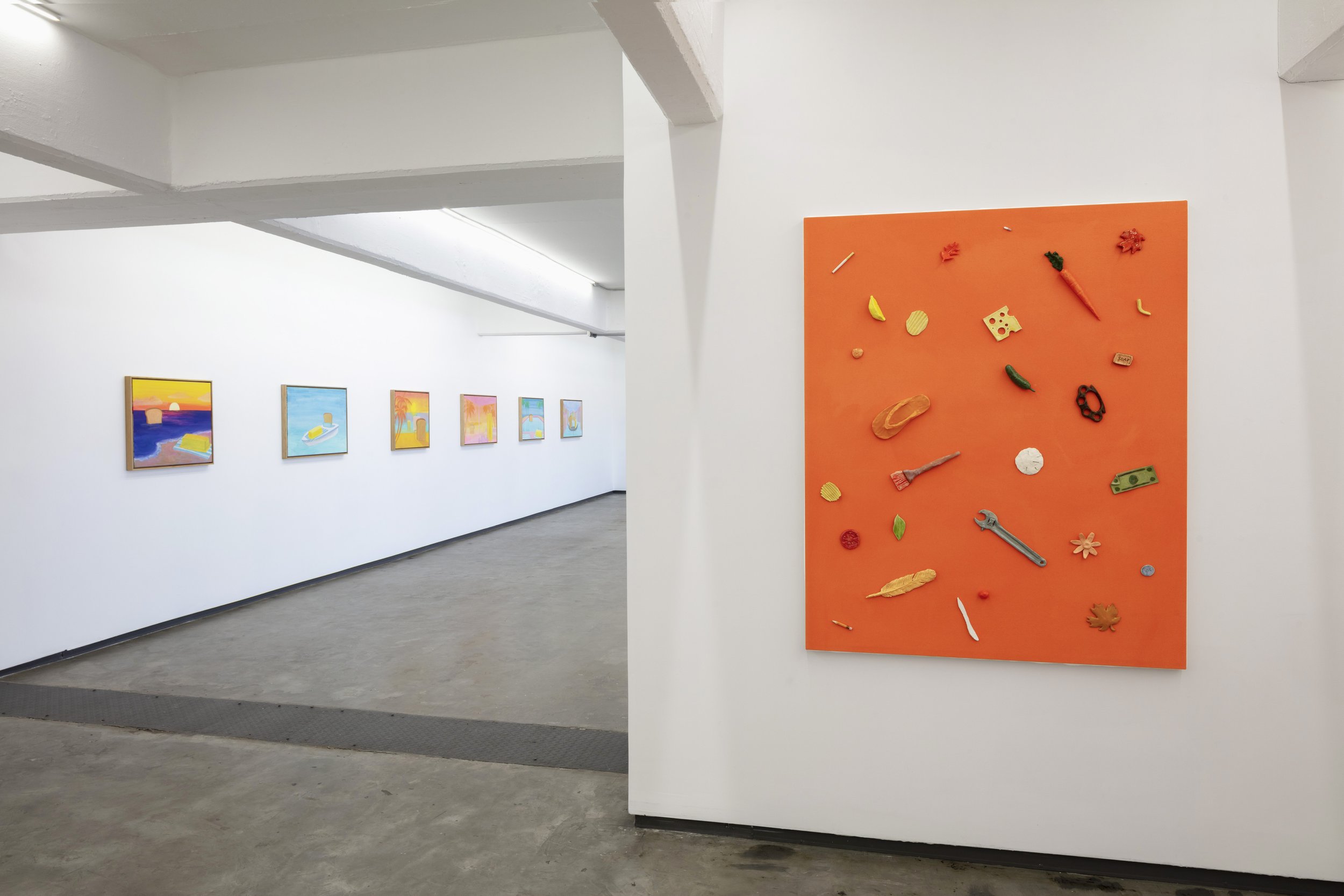
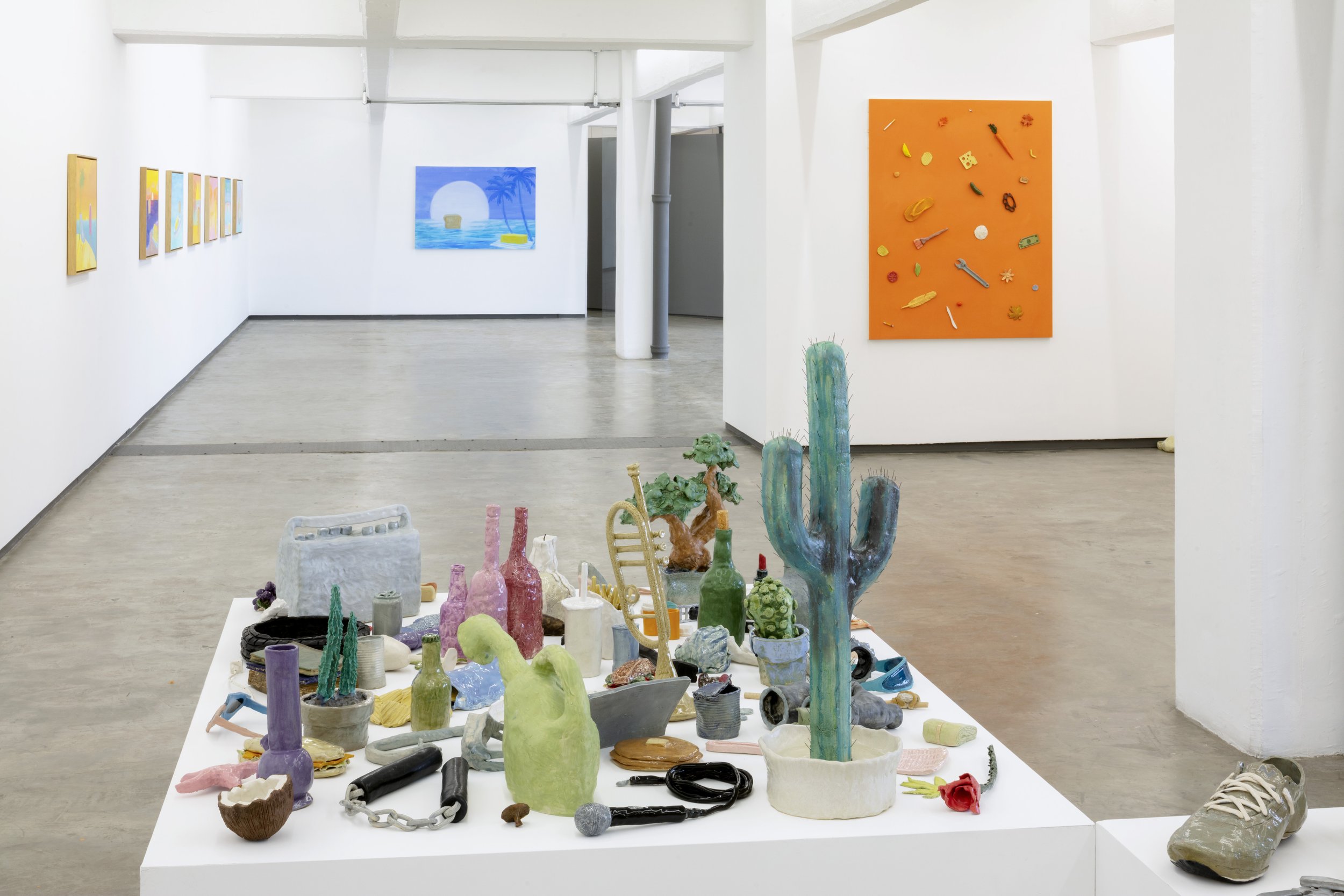
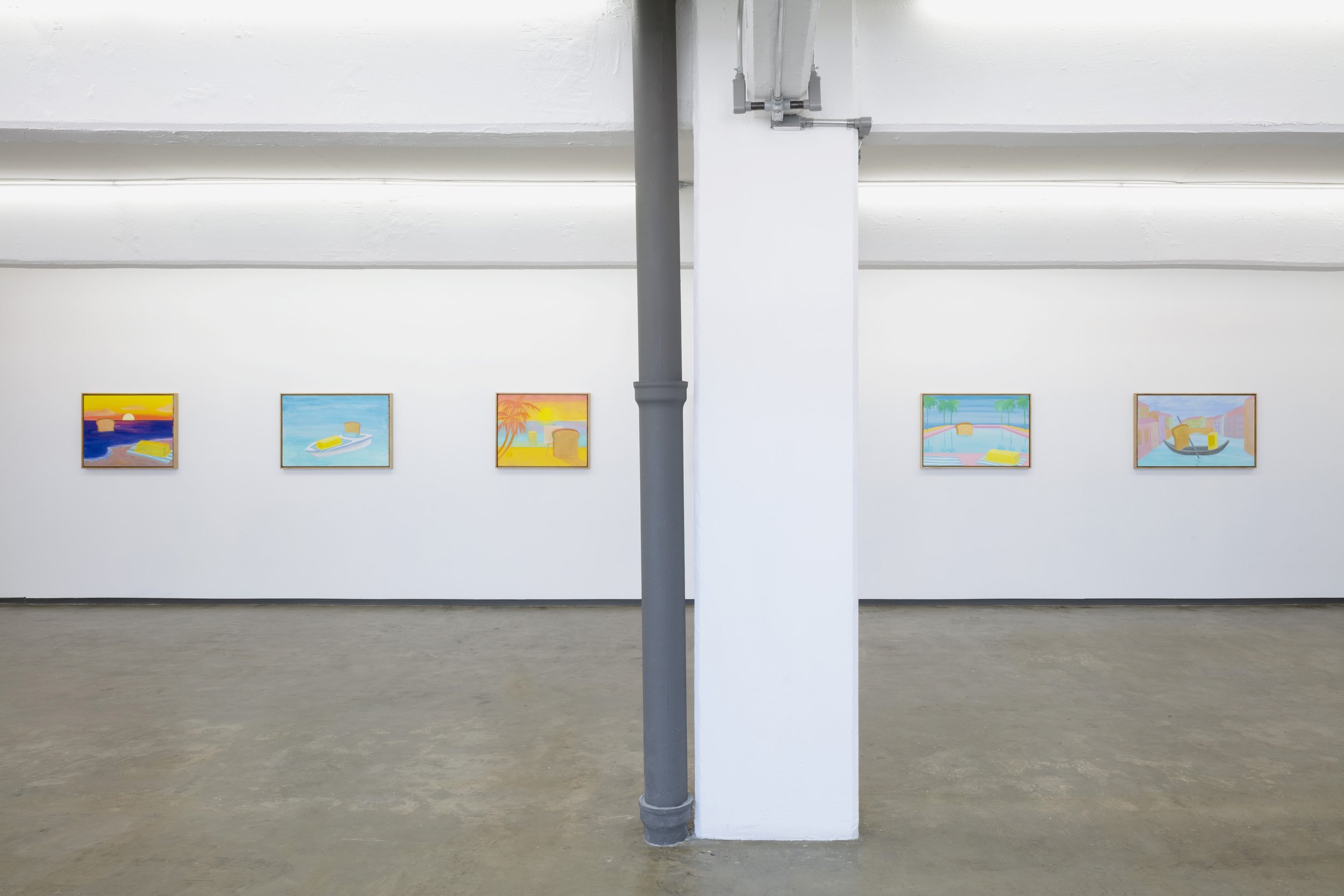

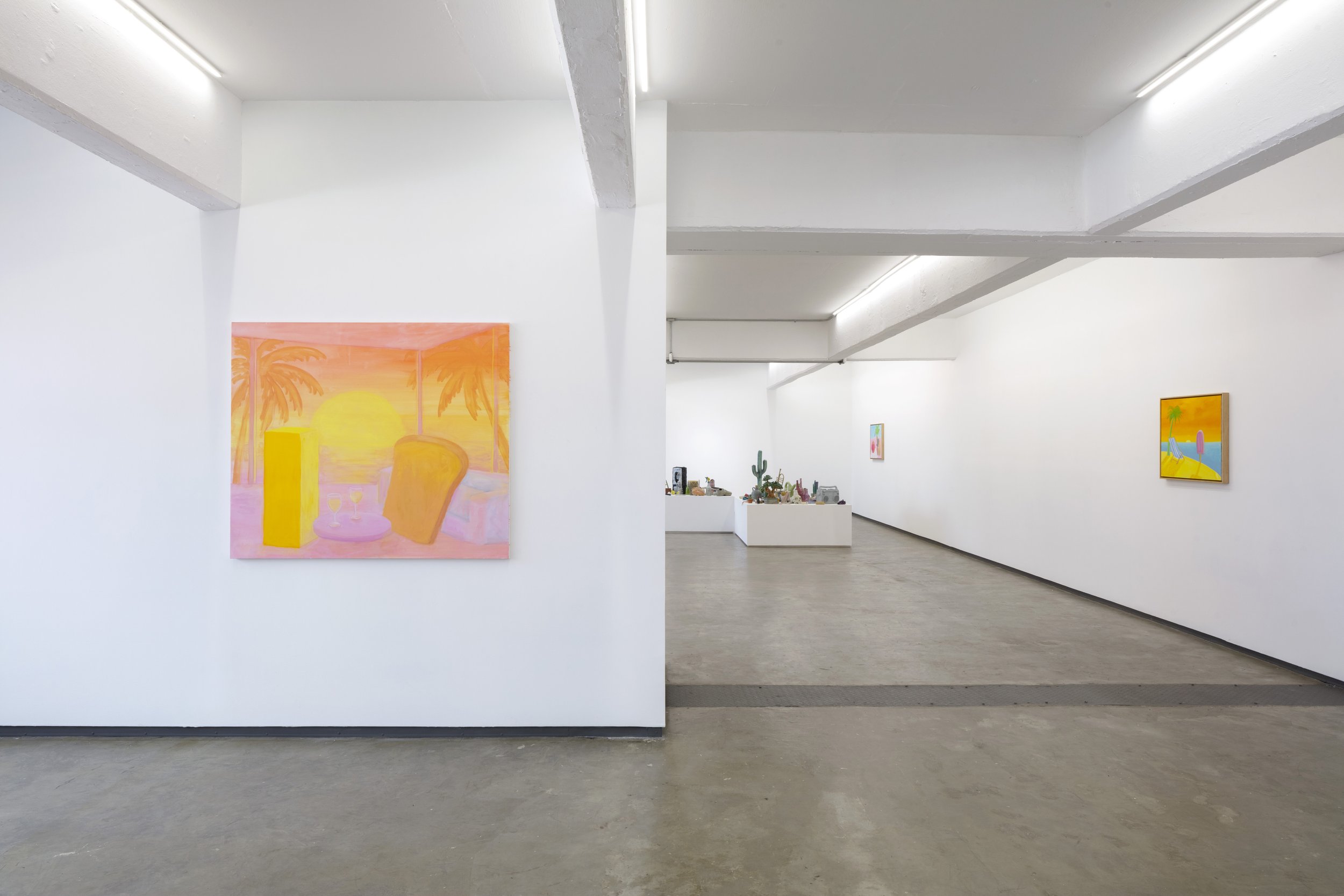


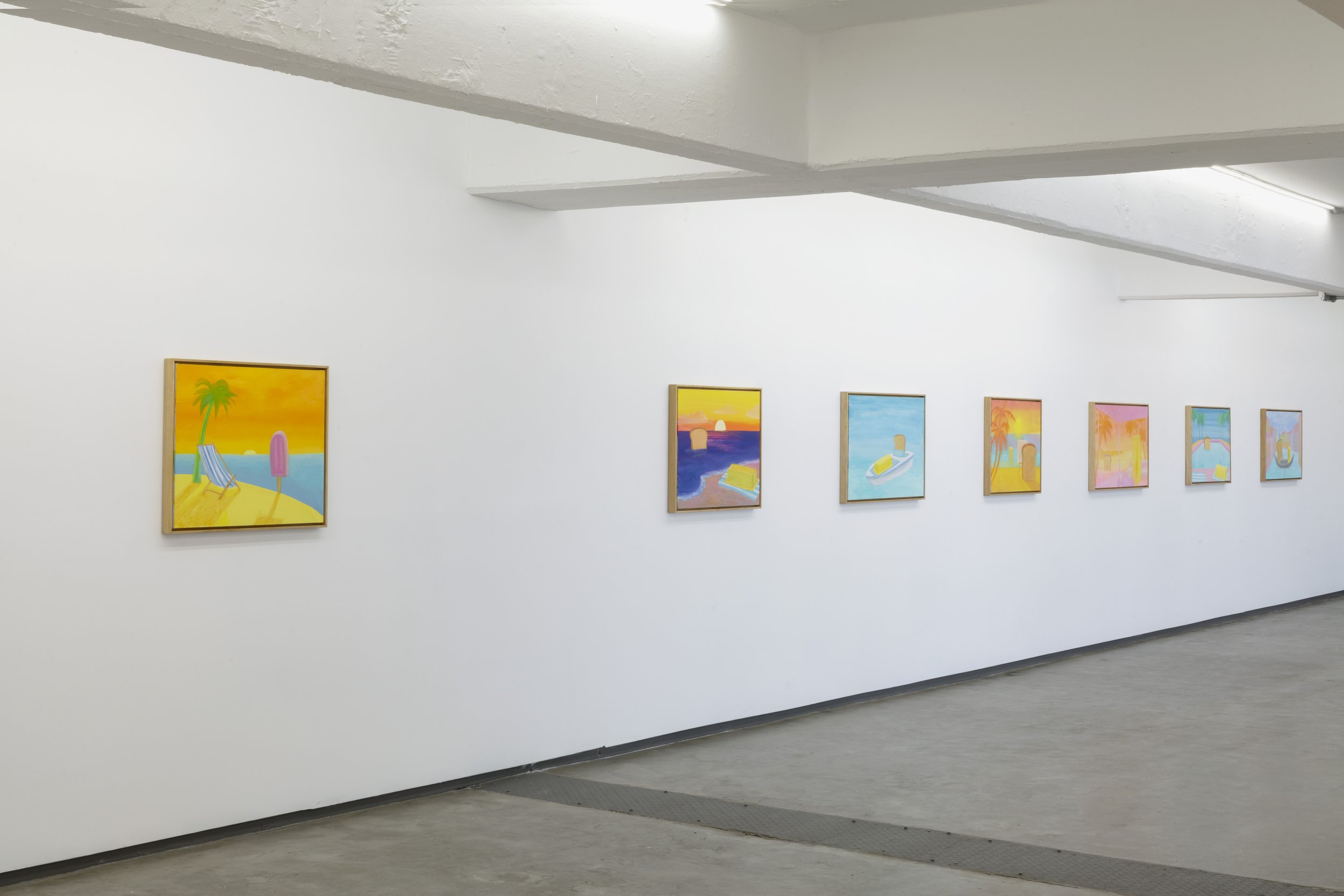
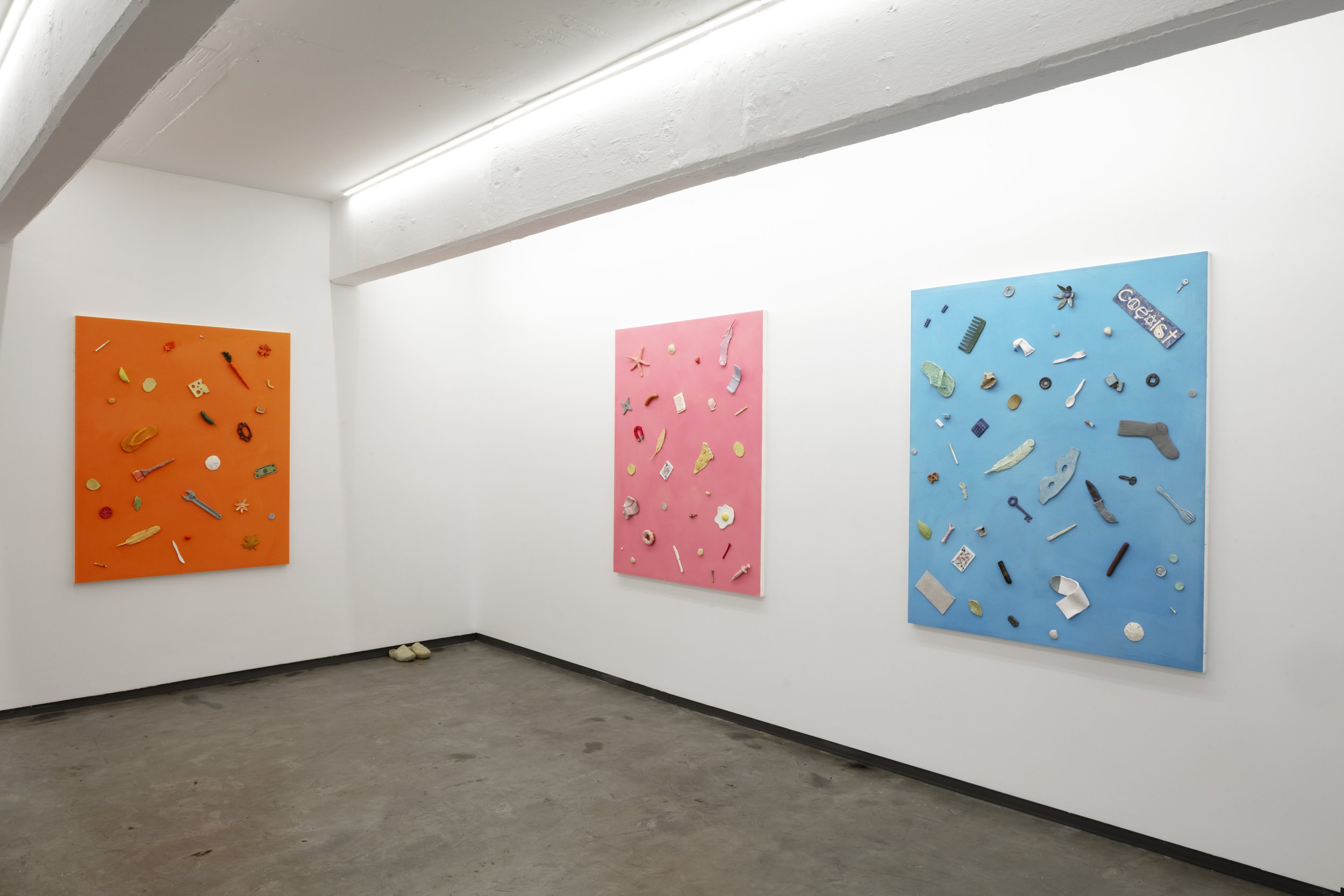
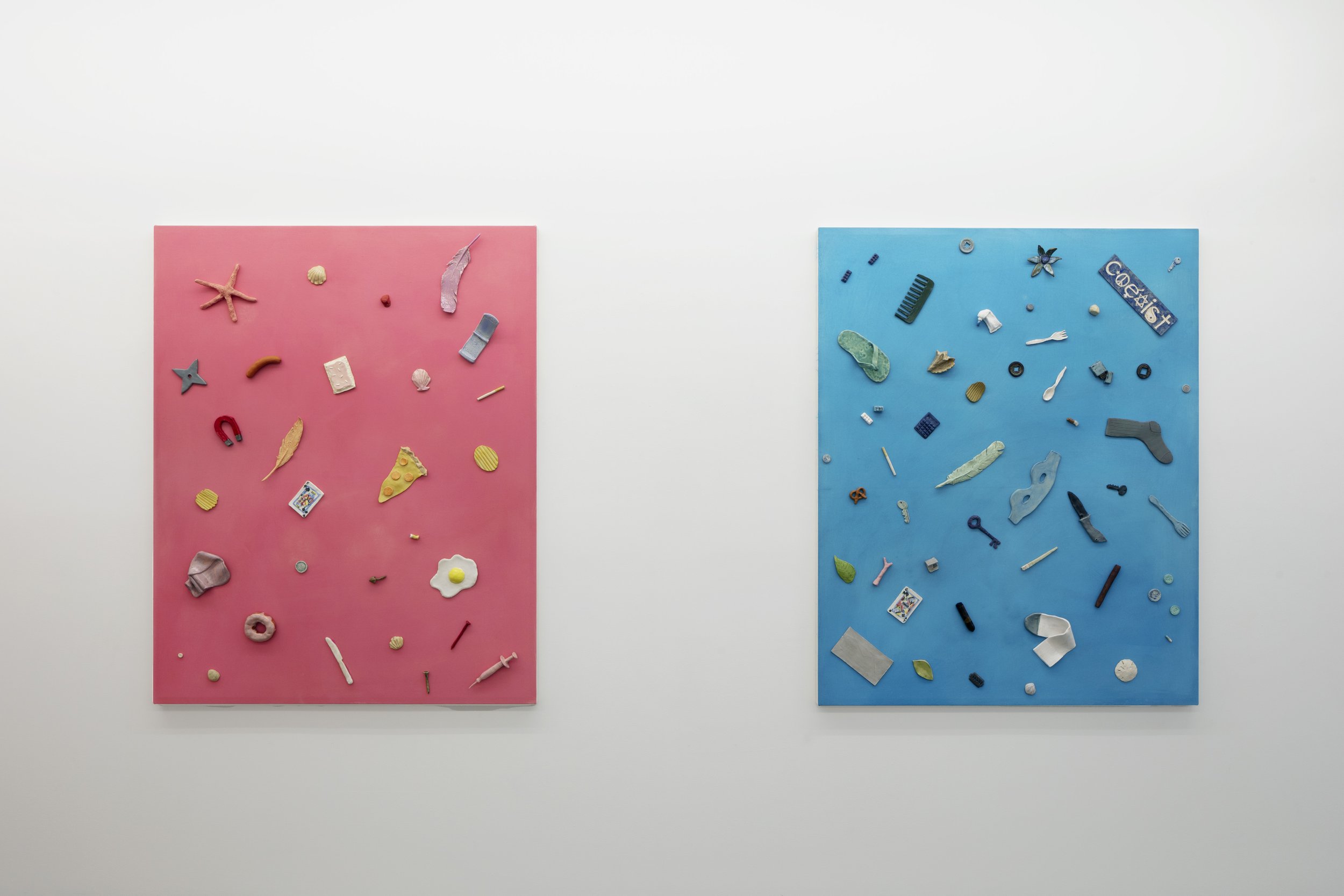
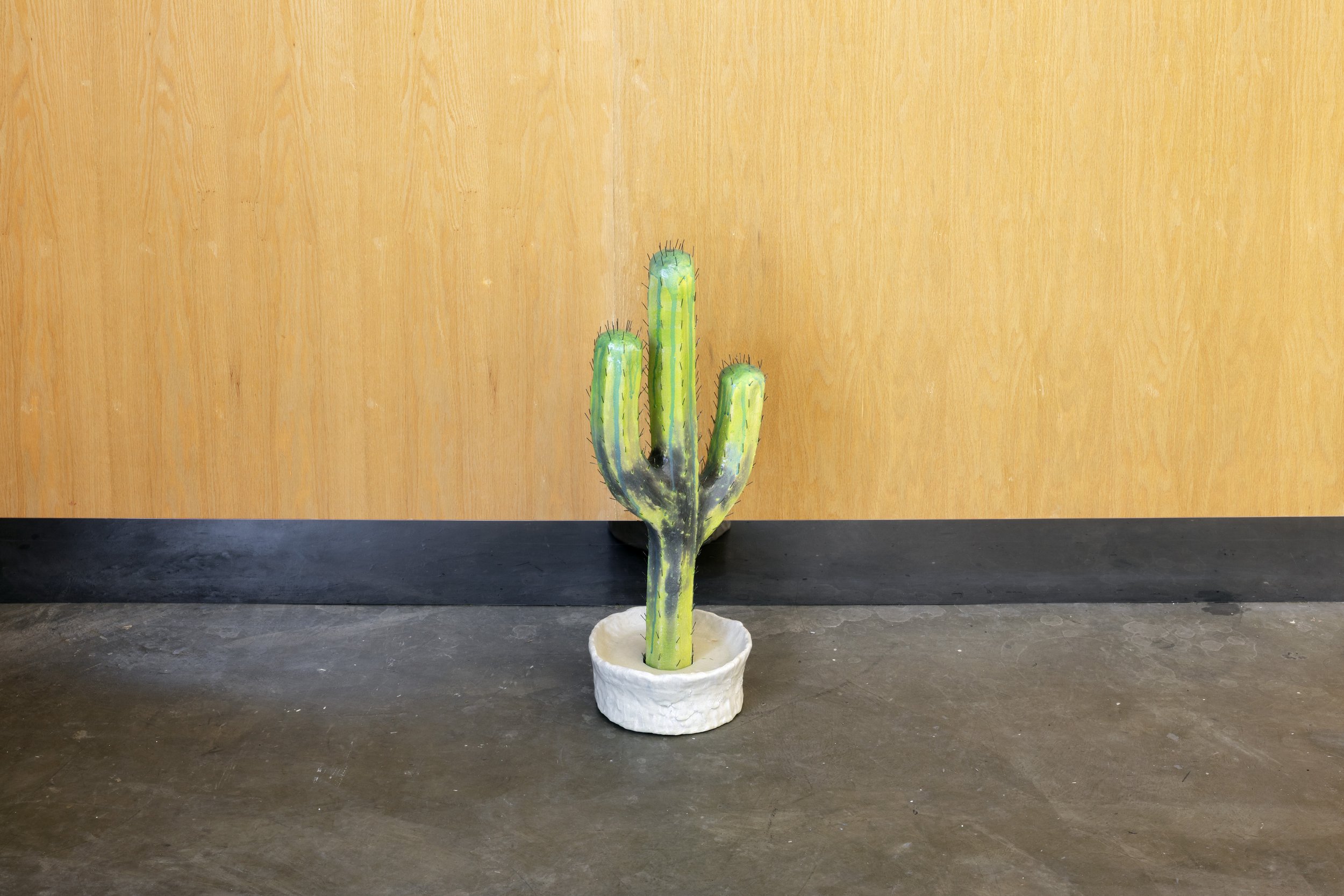
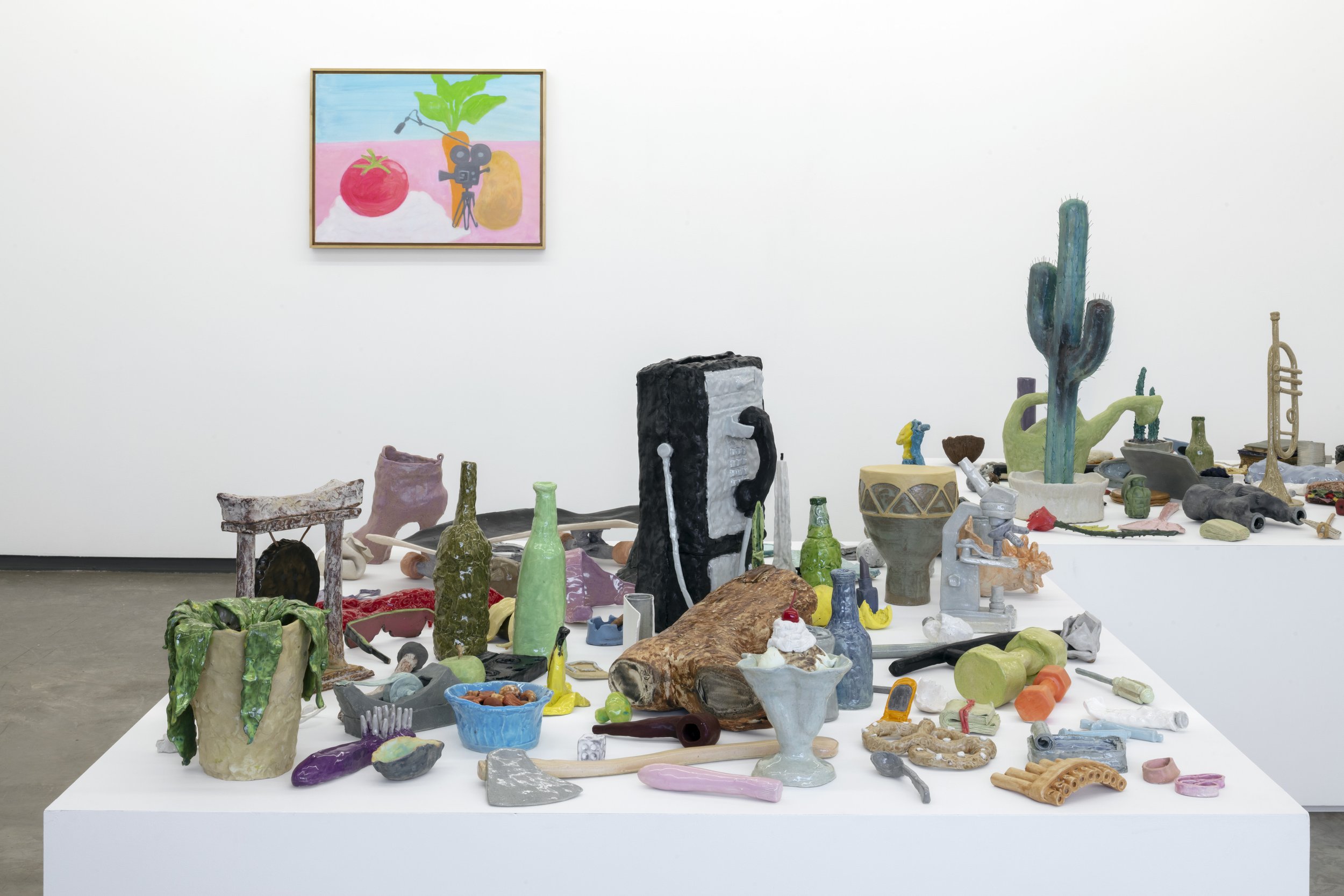
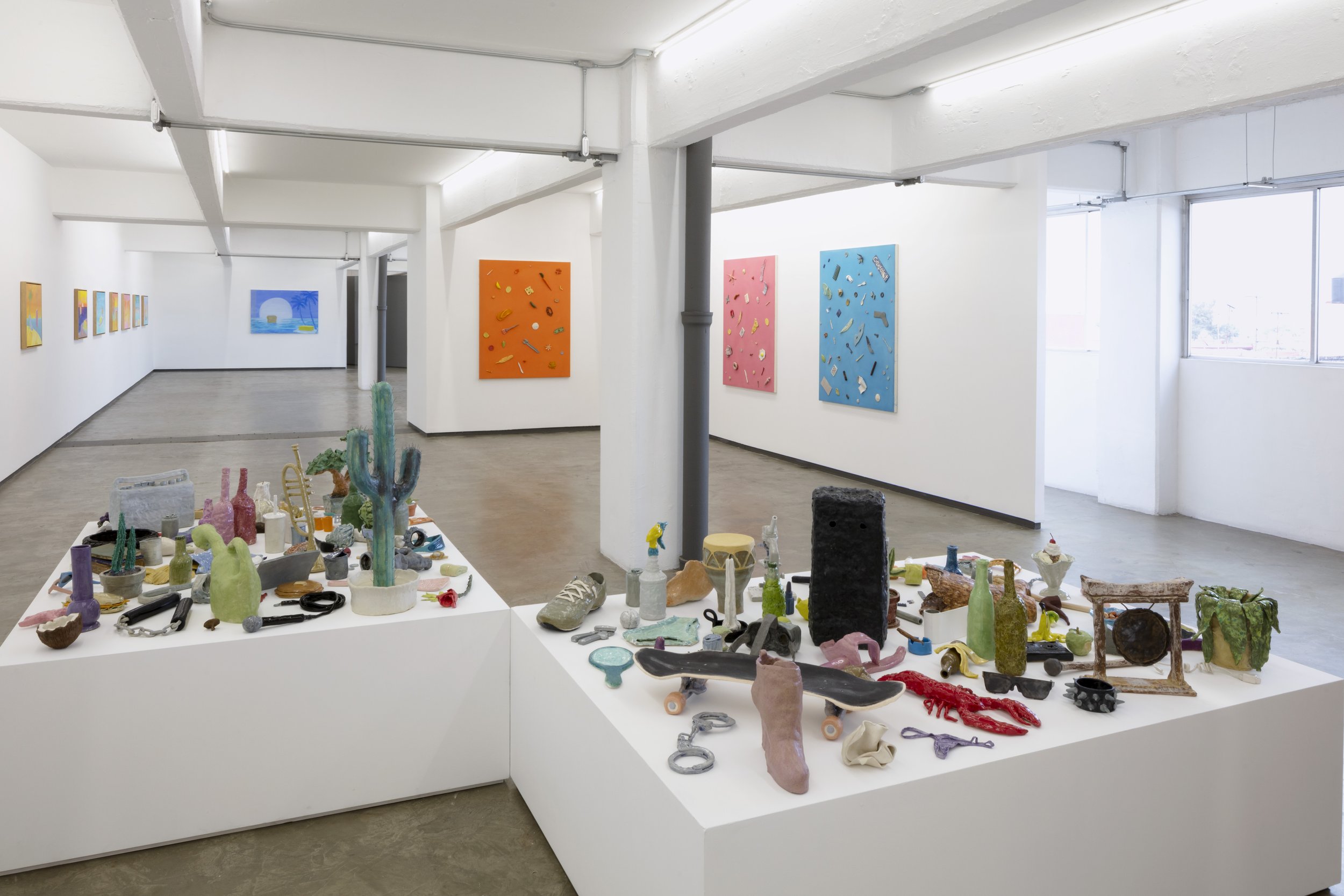
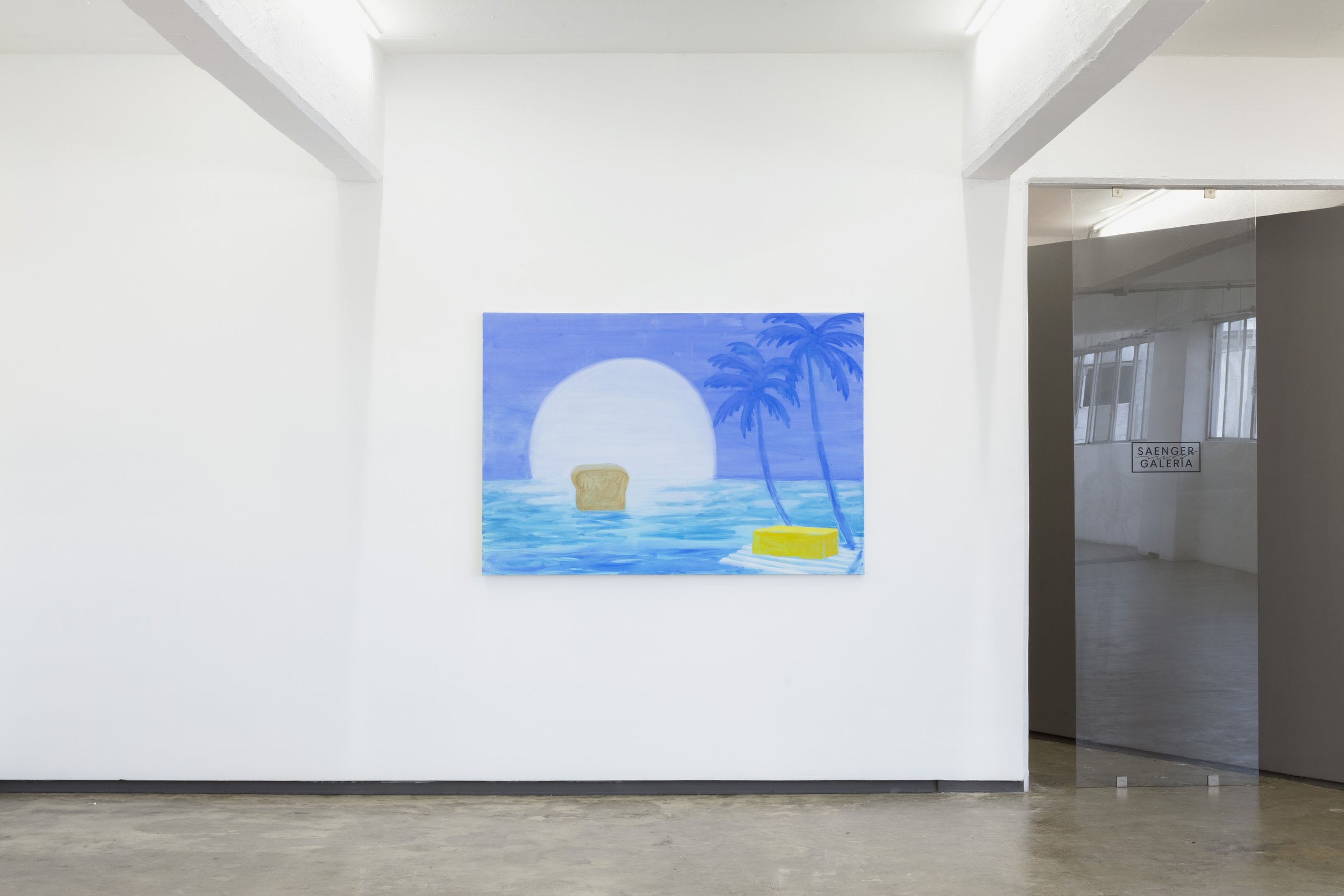

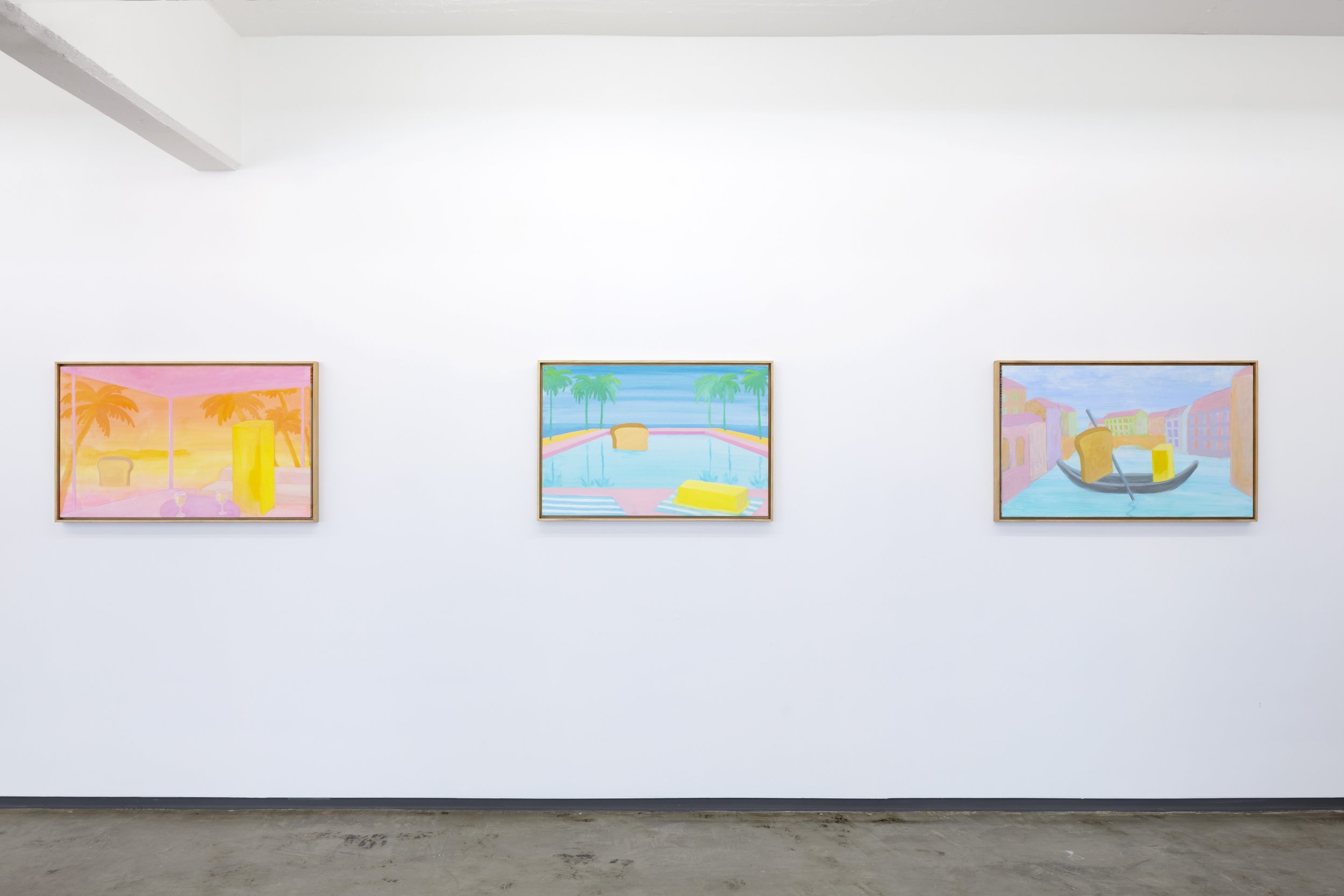
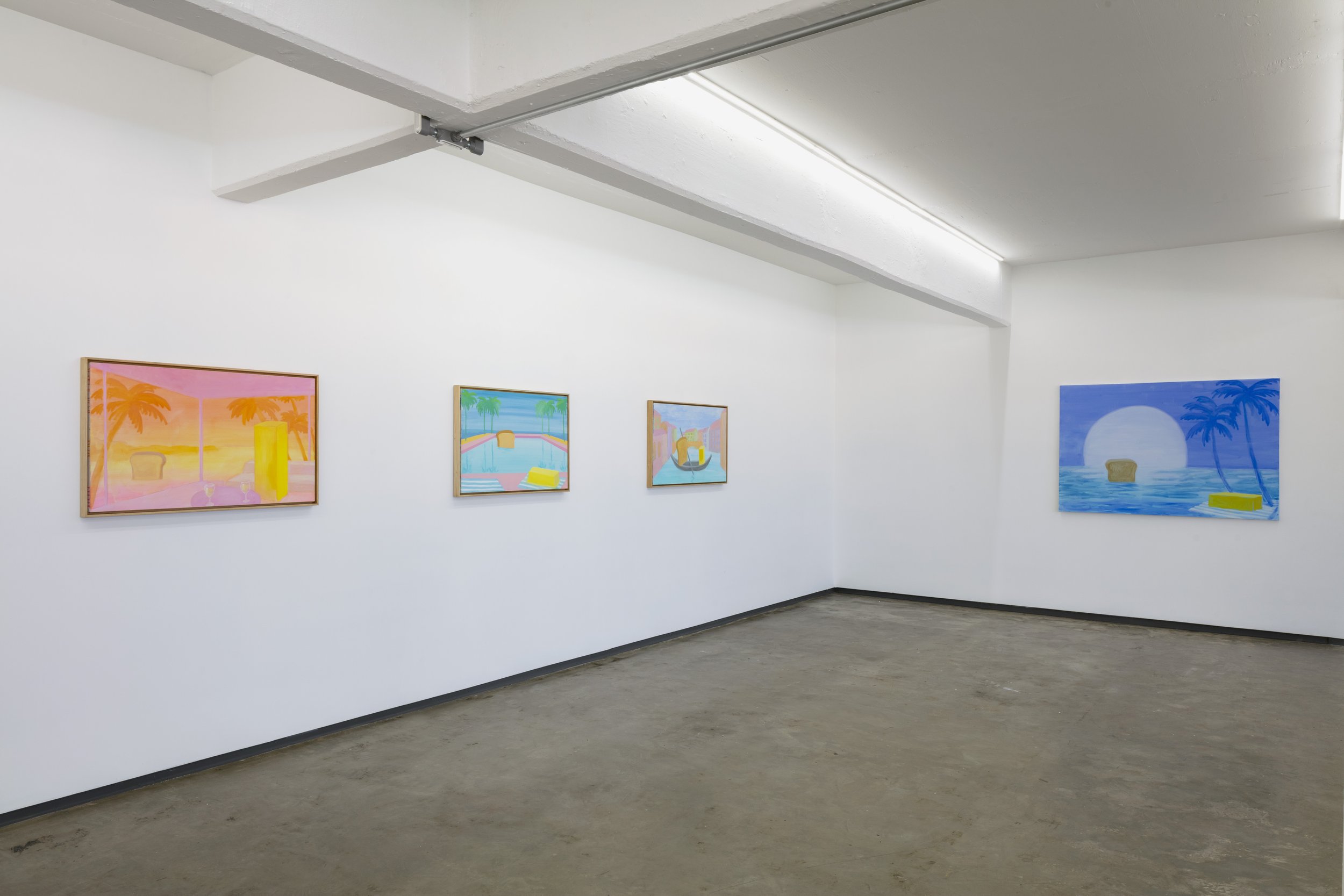
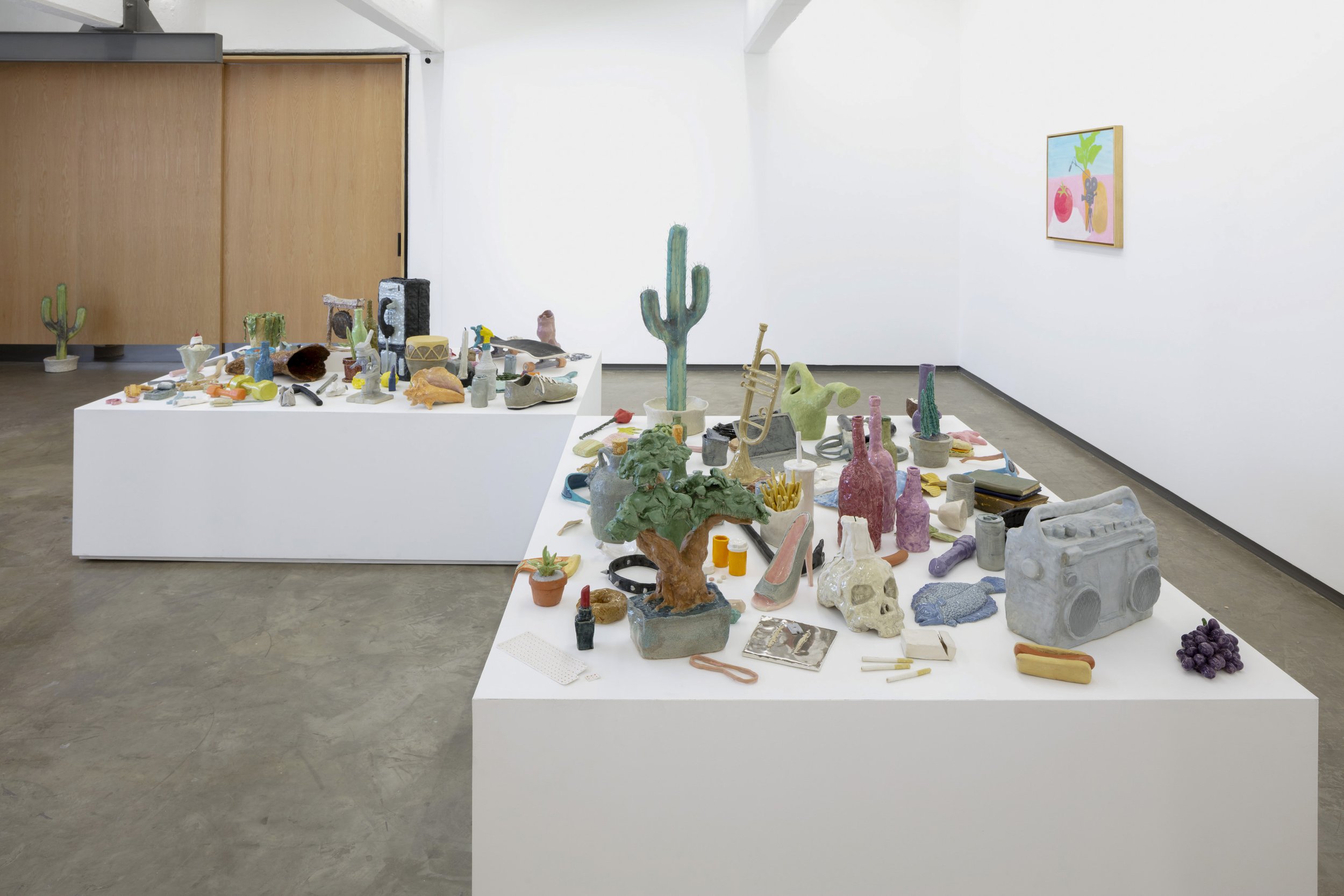
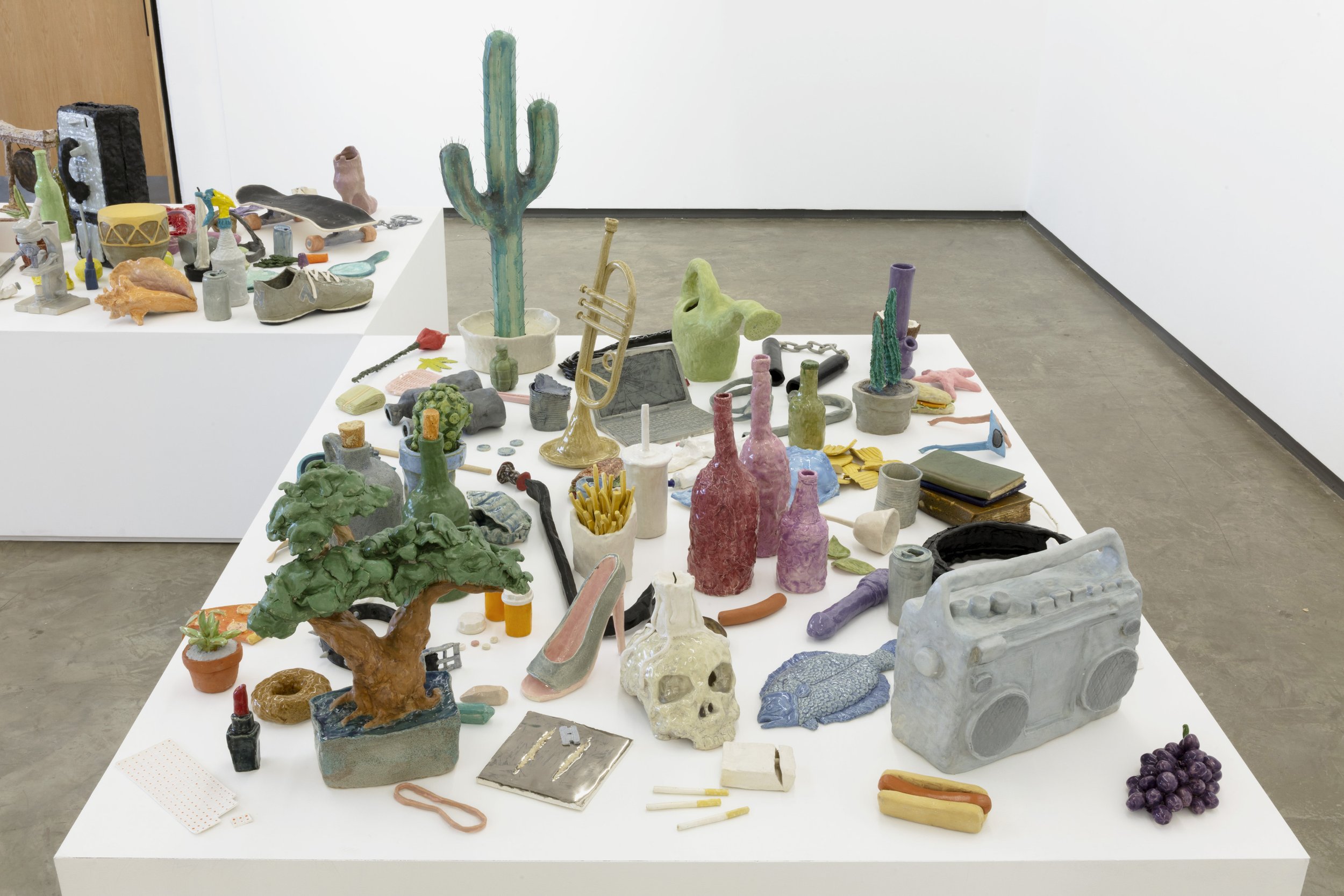

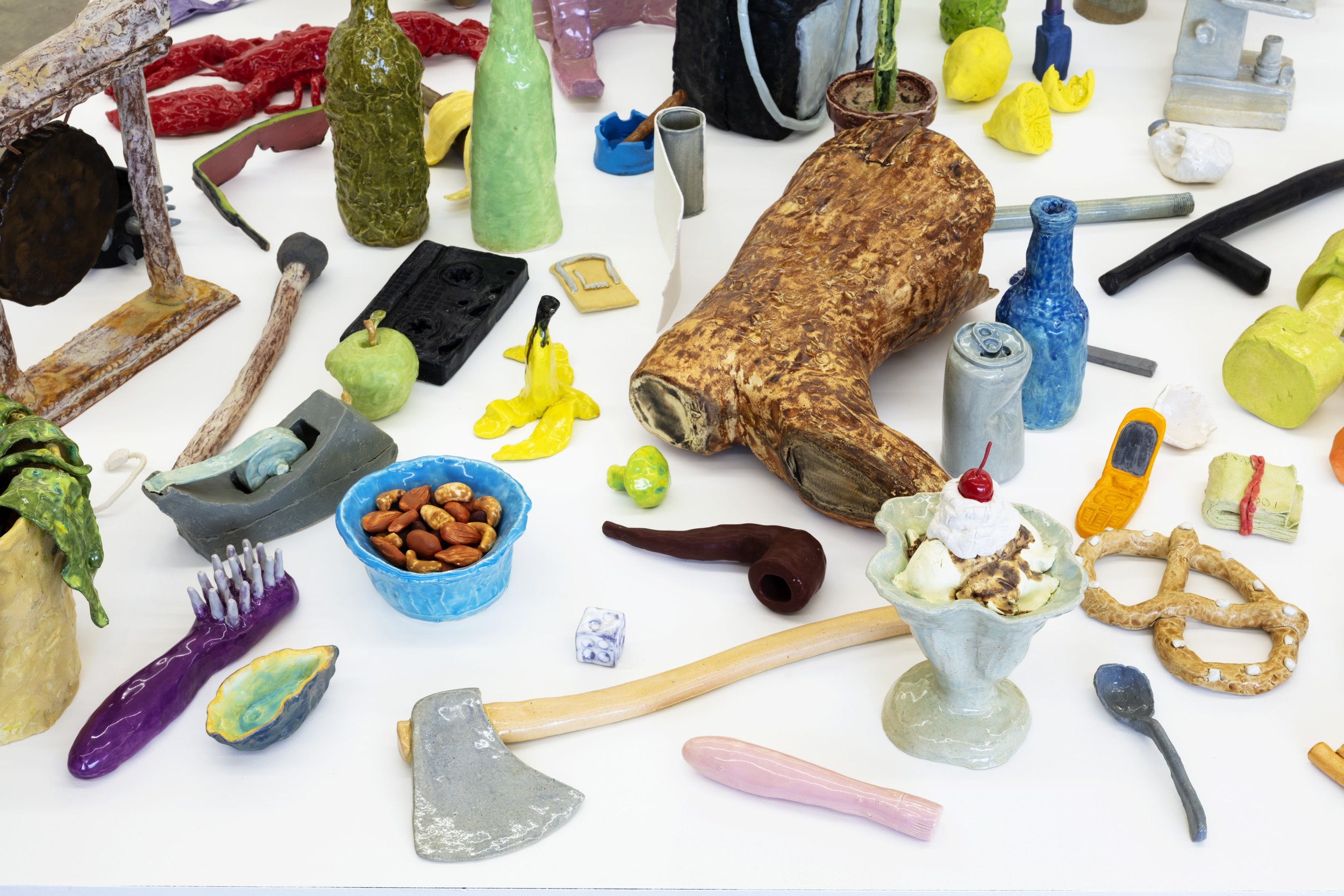
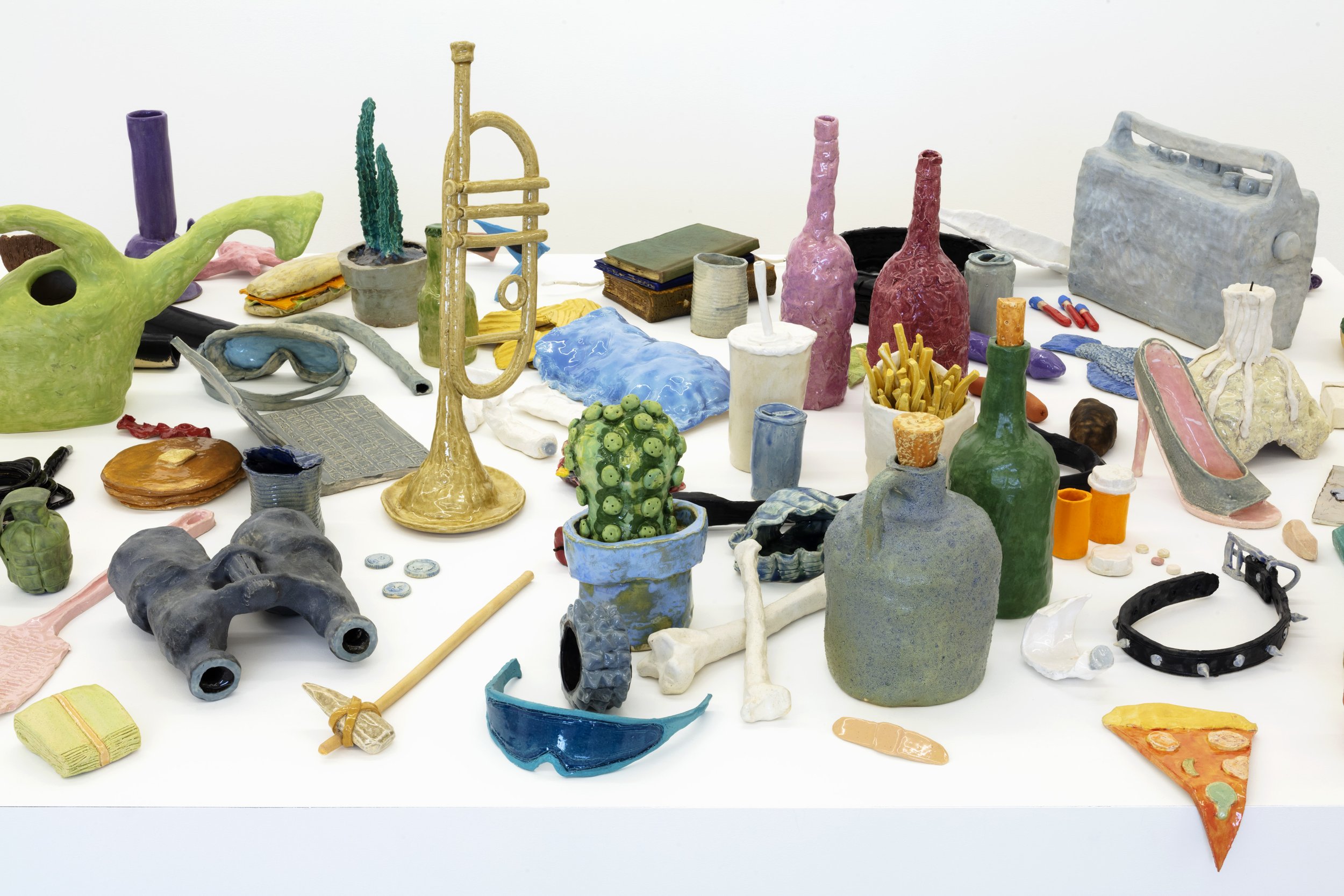
"Things have just been getting funnier since Duchamp. Many people have accepted the idea that art can be absolutely anything, but they might still think it shouldn't be funny."
In this quote, taken from an interview published in Art in America magazine ten years ago, Michigan-born artist Scott Reeder (born 1970) expresses some of the fundamental interests of his practice: art history, the public use of art, and art criticism seen through parody and sharp humor. From this peculiar perspective, Reeder presents his first solo exhibition in Mexico in collaboration with Saenger Galería: This, That, and the Other.
Consisting of three of his most recent series —Object Paintings, Image Paintings, and the Kuddelmuddel Ceramic series—Reeder’s exhibition brings together a vast collection of flat and relief paintings, as well as glazed earthenware sculptures, which allow the public to delve into the trajectory of more than twenty-five years of the socalled Midwestern Magritte. This analogy with the Belgian artist, the painter among philosophers, is due to a common observation of the everyday and the questioning of normality. The similarity between the intentions of both artists is deeper if confrontation is considered as a compositional strategy; either a material friction, as occurs in the ceramic paintings of relief ceramic paintings, where a super-flat and smooth surface, in pastel tones and a diluted appearance, contrasts with the mass of small, solid, and shiny glazed ceramic figures, or the clash due to repetition in which the same pair of protagonists, bread and butter, appears in different contexts or in the same situation with subtle variations.
Together with the paintings of bread and butter, which in their repetition and variation of the same theme remind us of the classic studies of theArtist and His Model by Picasso or Turner's at once intimate and epic character landscape or any other genre and artist from the pictorial tradition turned cliché, the sculptures and installations of everyday objects made from ceramic are the works included in the exhibition This, That, and the Other in which Reeder has further explored the multiplicity of possibilities of humor, of harmless appearance, but with a highly corrosive impact. Reeder has stated, "Whether it's funny or not, I'm definitely interested in a kind of extreme reduction, understatement, or deadpan, in making something really concise." And it is precisely his small, diverse, common, and numerous sculptures of earthenware ceramics, very punctual reductions of a concrete, daily, and discrete reality - a collection of banal objects belonging to a world of multiples without originals - before which, however, it is still possible to be surprised.
Although the artist has confessed that his work "almost always begins with language," it is equally worth noting that the astonishment that his work triggers, in terms of ingenuity, strangeness, panic, and admiration, does not require any explanation. His practice inhabits the paradox and evidences the nonsense of reality, and like reality, it simply exists, as other things exist, in its rebellion and its contradiction. Reeder names that anonymous, abstract, and everyday world; he is a faithful and keen reader.
— Christian Barragán
